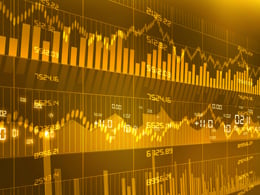 It’s been 15 years since the dot-com boom and bust, and the Nasdaq has finally reclaimed its old high. Both the Dow and the S&P 500 have hit a bunch of new highs since then, but the Nasdaq, which flew higher and crashed harder, didn’t make it back to the top of the mountain until yesterday.
It’s been 15 years since the dot-com boom and bust, and the Nasdaq has finally reclaimed its old high. Both the Dow and the S&P 500 have hit a bunch of new highs since then, but the Nasdaq, which flew higher and crashed harder, didn’t make it back to the top of the mountain until yesterday.
What can we learn from this?
The long run may be longer than you bargained for. The idea that stocks always go up in the long run may be right, but the long run can be a really long time. Fifteen years certainly wasn’t what investors had in mind when they bought in 1999, any more than losing a large chunk of their money was.
I would be interested to know if there’s anyone out there—anyone at all—who bought and held Nasdaq stocks for the full period from before 2000 to now. That would take some serious patience and courage—more than I have.
And no one’s even made any money yet. Even if that hypothetical person had bought and held, he or she would still be underwater in terms of purchasing power. The Nasdaq may be at a nominal high, but in terms of real pricing, adjusted for inflation, it’s not there yet.
To get back to what you might call even on an investment basis, you would have to recover your inflation losses and then add on a return for the past 15 years. Finally climbing out of a hole doesn’t mean we’ve actually moved any higher.
Valuations matter. What makes this especially maddening is that those who bought into the market in 1999 thinking the Internet would change the world were right! How frustrating is it to be essentially right on the facts and dead wrong on the investment thesis?
The key to this failure was valuations. Companies can be great, but as investments they can still fail if you pay too much. We learn this lesson over and over again, from the Nifty Fifty, to the dot-com boom and bust, to the housing bubble.
Looking forward
The best indicator for future returns, over 5 to 10 years, is the current valuation of the market. If the market is expensive, which it is, you may well end up disappointed. Even if the fundamentals are strong—even if you’re right in your projections about how good things will get—you can still be hurt if you pay too high a price. Anyone buying stocks today should be aware of that.
Expectations are a key factor here. For the market to really outperform over the next 5 to 10 years, it not only has to do better, it also has to do better than everyone thinks it will, which is a much higher bar. What’s more, companies have to beat expectations on a profitability and financial basis, not just on a “changing the world” basis.
The higher the expectations, the harder they are to beat. In 2000, anyone investing in the Nasdaq really expected the world to change (and it did), but the profit margins weren’t there, due to competition. Anyone buying into the market today shouldn't just look at the shape of the economy but at how all of those companies are going to grow their earnings faster than everyone expects.
With many metrics at or close to records (profit margins, valuations, and others), it’s going to be difficult.


 Print
Print


